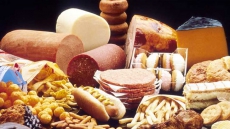TORONTO — It's that time of year again, time for Canadians to think about getting that jab in the arm to protect themselves against the dreaded winter scourge — the flu.
And while the makeup of last year's influenza vaccine missed the mark when it came to effectiveness, infectious disease experts say people shouldn't shy away from this season's shot based on that failure.
"It's important to know that last year doesn't predict this year," says Dr. Bryna Warshawsky of Public Health Ontario. "And last year was an anomaly in terms of past years."
Each February, the World Health Organization chooses which influenza strains should be included in the coming fall's vaccine, based on those circulating at the time.
That best-guess choice has to be made early because it takes six months for manufacturers to produce the vaccine and stockpile enough doses to supply provincial and territorial inoculation programs, which typically begin in mid to late October.
Cases of influenza — a disease that for many people means a miserable week of coughing, sneezing, body aches and fever — usually start being reported in late November to early December and often continue into early spring.
On average, an estimated 12,500 Canadians are admitted to hospital each year for complications arising from the flu and about 3,500 die, according to the Public Health Agency of Canada.
There are three types of influenza viruses: A, B and C. Human influenza A and B viruses cause seasonal epidemics in North America almost every winter, says the U.S. Centers for Disease Control.
Traditional seasonal flu shots — known as trivalent vaccines —are configured to protect against two A strains, H3N2 and H1N1, and one of two B-lineage influenza viruses.
"But in that six months between when the vaccine choices are made and the vaccine actually gets delivered, the virus continues to change and sometimes it changes to an extent that it doesn't match what was selected in February," says Warshawsky.
"Last year, the problem was the H3N2."
The bug had mutated, making it genetically dissimilar enough to the H3N2 component in the vaccine to offer virtually no protection against the respiratory infection — especially since the dominant strain making people sick just happened to be H3N2.
"Ideally what we would like is that the influenza strain included in the vaccine is the identical twin of what is circulating out in the community," explains Dr. Danuta Skowronski, an expert in influenza and emerging respiratory pathogens at the B.C. Centre for Disease Control in Vancouver.
That seldom happens because of the lead time needed for the manufacturing process, she says.
"So typically what we're aiming for is that these viruses might be considered like siblings — brothers or sisters — in terms of the similarities between them.
"Last season, we probably had similarities that were more like a distant cousin relationship between the vaccine and the circulating viruses. And for the coming season, I anticipate that what we're going to look at is more like first cousins."
Winter 2014-15 saw a spike in lab-confirmed cases, hospital admissions and people dying from the flu, compared with many previous seasons. About 90 per cent of influenza deaths each year occur among the elderly.
Older people are especially vulnerable to H3N2, so in a bad year for that strain "we get more outbreaks in long-term care facilities and more hospitalizations and more deaths," says Warshawsky.
This season's trivalent shot is a mix of the evolved H3N2 strain, H1N1 and B/Phuket for adults 18 and over.
And for the first time, some provinces are providing a four-strain, or quadrivalent, vaccine for children aged six months to 17, which also contains a second B-lineage virus called B/Brisbane.

"Because children tend to have higher attack rates due to B infections, because they don't have the same kind of cumulative life experience with both lineages like adults do, the decision has been made in some provinces ... to give those to children," says Skowronski.
The federal government is working with five vaccine producers for this year's supply, says Sylwia Krzyszton, a spokeswoman for the Public Health Agency of Canada.
About 12 million doses have been ordered by the provinces and territories for public immunization programs, including about 2.9 million doses of quadrivalent vaccine, at a cost to the jurisdictions of about $75 million.
In any given year, the trivalent vaccine is 50 to 60 per cent effective in preventing flu in those who get their shots — but that's roughly only a third of the population.
So given the poor performance of the 2014-15 vaccine, will even fewer Canadians choose to bare their arms this season?
"I am concerned by that," concedes Skowronski.
"Perhaps people think a 50 per cent vaccine effectiveness isn't great and they wonder: is it still worthwhile?"
But to put it in context, "if I were to give to you a discount coupon that gave you 50 per cent off your grocery bill at the checkout stand, you would probably think that was great.
"And in the same way, a 50 per cent reduction in influenza risk is really important," especially for the elderly and those with underlying health conditions, whose lives can be threatened by the respiratory infection, she says.
"That protection is not something to be dismissed outright. And I do think it would be a double tragedy if coming out of last season's experience, people turned away from the vaccine."





